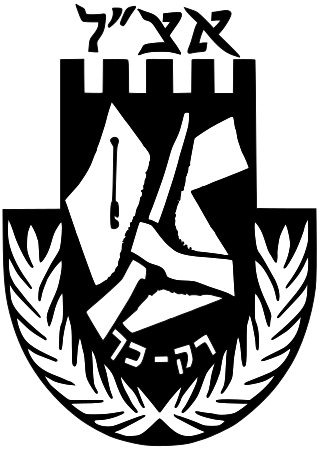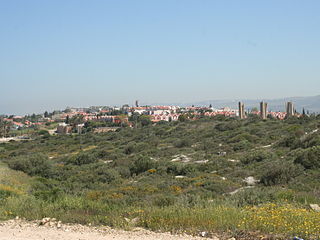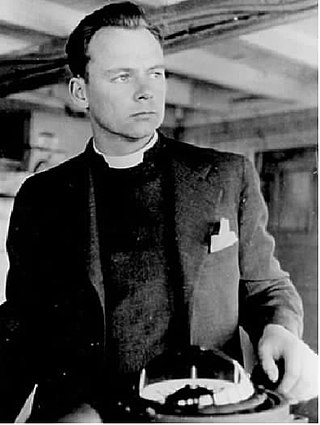
The Irgun, or Etzel, was a Zionist paramilitary organization that operated in Mandate Palestine and then Israel between 1931 and 1948. It was an offshoot of the older and larger Jewish paramilitary organization Haganah. The Irgun has been viewed as a terrorist organization or organization which carried out terrorist acts.

Zionist political violence refers to politically motivated violence or terrorism perpetrated by Zionists. The term is used to describe violence committed by those who support the political movement of Zionism, and violence committed against opponents of Zionism. The violence often takes the form of terrorist attacks and has been directed against both Jewish and Arab targets. The most active period of most notable Zionist political violence began on June 30, 1924, through the 1940s, and continues to the present day, usually for the purpose of expanding Zionist settlements in Palestine.
Haganah was the main Zionist paramilitary organization that operated for the Yishuv in the British Mandate for Palestine. It was founded in 1920 to defend the Yishuv's presence in the region, and was formally disbanded in 1948, when it became the core force integrated into the Israel Defense Forces shortly after the Israeli Declaration of Independence.

Yishuv, or HaYishuv HaIvri, or HaYishuv HaYehudi Be'Eretz Yisra'el, denote the body of Jewish residents in Palestine prior to the establishment of the State of Israel in 1948. The term came into use in the 1880s, when there were about 25,000 Jews living in that region, and continued to be used until 1948, by which time there were some 630,000 Jews there. The term is still in use to denote the pre-1948 Jewish residents in Palestine, corresponding to the southern part of Ottoman Syria until 1918, OETA South in 1917–1920, and Mandatory Palestine in 1920–1948.
Darien II was the last ship to bring Aliya Bet refugees to Haifa during World War II. A former lighthouse tender, she sailed from the Black Sea to Palestine in early 1941.
Aliyah Bet was the code name given to illegal immigration by Jews, most of whom were refugees escaping from Nazi Germany, and later Holocaust survivors, to Mandatory Palestine between 1920 and 1948, in violation of the restrictions laid out in the British White Paper of 1939, which dramatically increased between 1939 and 1948. With the establishment of the State of Israel in May 1948, Jewish displaced persons and refugees from Europe began streaming into the new state in the midst of the 1948 Palestine war.

The Atlit detainee camp was a concentration camp established by the authorities of Mandatory Palestine in the late 1930s on what is now the Israeli coastal plain, 20 kilometres (12 mi) south of Haifa. Under British rule, it was primarily used to hold Jews and Arabs who were in administrative detention; it largely held Jewish immigrants who did not possess official entry permits. Tens of thousands of Jewish refugees were interned at the camp, which was surrounded by barbed wire and watchtowers.

The Haifa Oil Refinery massacre took place on 30 December 1947 in Mandatory Palestine. It began when six Arabs were killed and 42 wounded after members of the Zionist paramilitary organisation, the Irgun, threw a number of grenades at a crowd of about 100 Arab day-labourers. These Arab day-labourers had gathered outside the main gate of the then British-owned Haifa Oil Refinery to look for work.

Atlit is a coastal town located south of Haifa, Israel. The community is in the Hof HaCarmel Regional Council in the Haifa District of Israel.

The Patria disaster was the sinking on 25 November 1940 by the Jewish paramilitary organization Haganah of a French-built ocean liner, the 11,885-ton SS Patria, in the port of Haifa, killing 267 people and injuring 172.

Exodus 1947 was a packet steamship that was built in the United States in 1928 as President Warfield for the Baltimore Steam Packet Company. From her completion in 1928 until 1942 she carried passengers and freight across Chesapeake Bay between Norfolk, Virginia and Baltimore, Maryland.

The Cyprus internment camps were camps maintained in Cyprus by the British government for the internment of Jews who had immigrated or attempted to immigrate to Mandatory Palestine in violation of British policy. There were a total of 12 camps, which operated from August 1946 to January 1949, and in total held 53,510 Jews.
The Jewish Resistance Movement, also called the United Resistance Movement (URM), was an alliance of the Zionist paramilitary organizations Haganah, Irgun and Lehi in the British Mandate of Palestine. It was established in October 1945 by the Jewish Agency and operated for some ten months, until August 1946. The alliance coordinated acts of sabotage to undermine the British authority in Mandatory Palestine.

Balad al-Sheikh or Balad ash-Shaykh was a Palestinian Arab village located just north of Mount Carmel, 7 kilometers (4.3 mi) southeast of Haifa. Currently the town's land is located within the jurisdiction of the Israeli city, Nesher.

A successful paramilitary campaign was carried out by Zionist underground groups against British rule in Mandatory Palestine from 1944 to 1948. The tensions between the Zionist underground and the British mandatory authorities rose from 1938 and intensified with the publication of the White Paper of 1939. The Paper outlined new government policies to place further restrictions on Jewish immigration and land purchases, and declared the intention of giving independence to Palestine, with an Arab majority, within ten years. Though World War II brought relative calm, tensions again escalated into an armed struggle towards the end of the war, when it became clear that the Axis powers were close to defeat.

John Stanley Grauel was a Methodist minister and American Christian Zionist leader. He was a crew member of the Aliyah Bet ship Exodus1947 and a secret Haganah operative. Grauel is credited with being the key individual who persuaded the United Nations Special Committee on Palestine to recommend for the Partition Resolution of November 1947, creating the State of Israel. In a speech to the Jewish Agency, Golda Meir, referred to his testimony as the first appeal by a “priest, a perfectly worthy gentile, a priori, no Jewish witness was to be believed.”

Events in the year 1940 in the British Mandate of Palestine.
The Immigrant camps in Israel were temporary refugee absorption camps, meant to provide accommodation for the large influx of Jewish refugees and new Olim arriving to Mandatory Palestine and later the independent State of Israel, since early 1947. The tent camps first accommodated Holocaust survivors from Europe, and later largely Jewish refugees from Middle East and North Africa. By early 1950, immigrant camps were converted into ma'abarot, where living conditions became better and tin dwellings replaced tents.

Mandatory Palestine was a geopolitical entity that existed between 1920 and 1948 in the region of Palestine under the terms of the League of Nations Mandate for Palestine.

SS Patria was an 11,885 GRT French ocean liner built in 1913 for Compagnie française de Navigation à vapeur Cyprien Fabre & Cie, for whom she was first a transatlantic liner and then an emigrant ship. From 1932 Fabre Line leased her to Services Contractuels des Messageries Maritimes, who ran her between the south of France and the Levant. After the fall of France in June 1940 the British authorities in Mandatory Palestine seized her in the Port of Haifa and placed her under the management of the British-India Steam Navigation Company. In November 1940, the Zionist movement Haganah planted a bomb aboard which sank her with the loss of between 260 and 300 lives. Patria remained a wreck in Haifa port until she was scrapped in 1952.
















